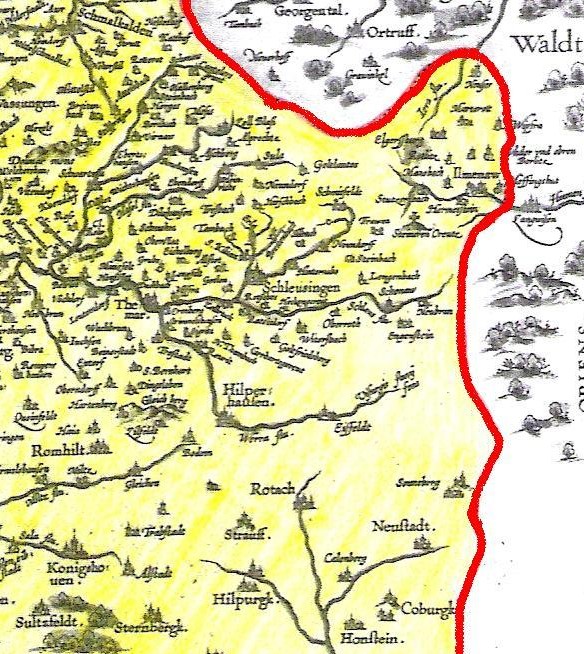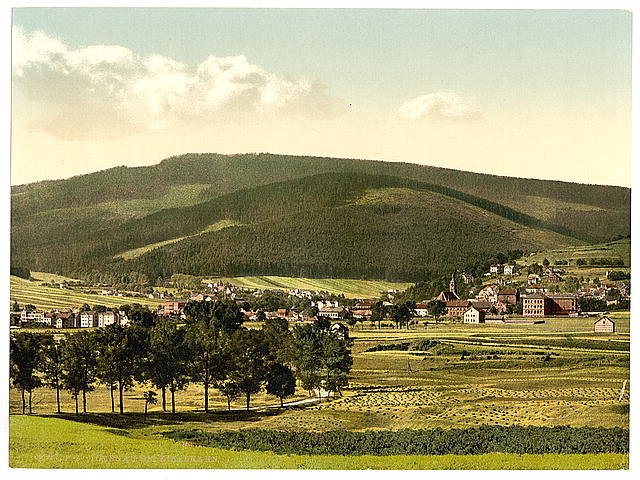I always loved being here, I believe it comes from the harmony of everything around here … (Goethe to Schiller, Ilmenau, August 29th, 1795)
A village may have been founded on this floodplain of the Ilm river by St. Peter’s monastery of Saalfeld, which coordinated the settlement of this part of Thuringia.
First recorded in 1273 as a village belonging to the Counts of Käfernburg, Ilmenau passed in 1302 to the Counts of Schwarzburg.
A castle was built here in 1320 by the Counts of Schwarzburg, after an important trade route from Nuremberg in the south to Erfurt in the north was relocated near Ilmenau.
The Schwarzburgs founded a planned town (relatively similar to Königsee) and Ilmenau got its municipal rights in 1341. The name comes from the German words Ulmen (i.e. Elms) and Aue (i.e. floodplain), in reference to the floodplain of the Ilm river, which was covered with elms before the foundation of the town.

The Duke Saxe Weimar appointed Johann Wolfgang Goethe in 1776 to look after the finances of the town and the revival of silver and copper mining.
